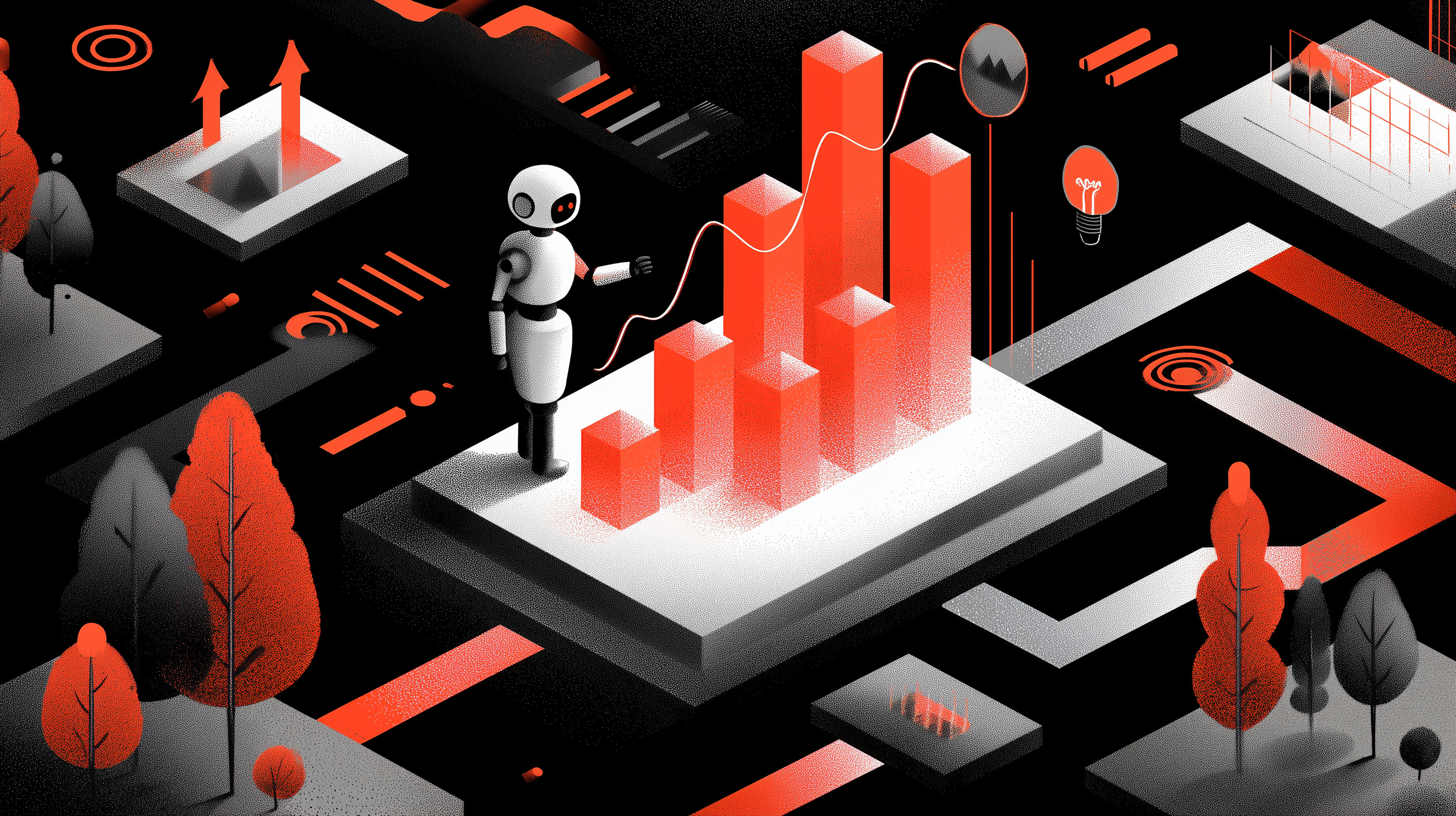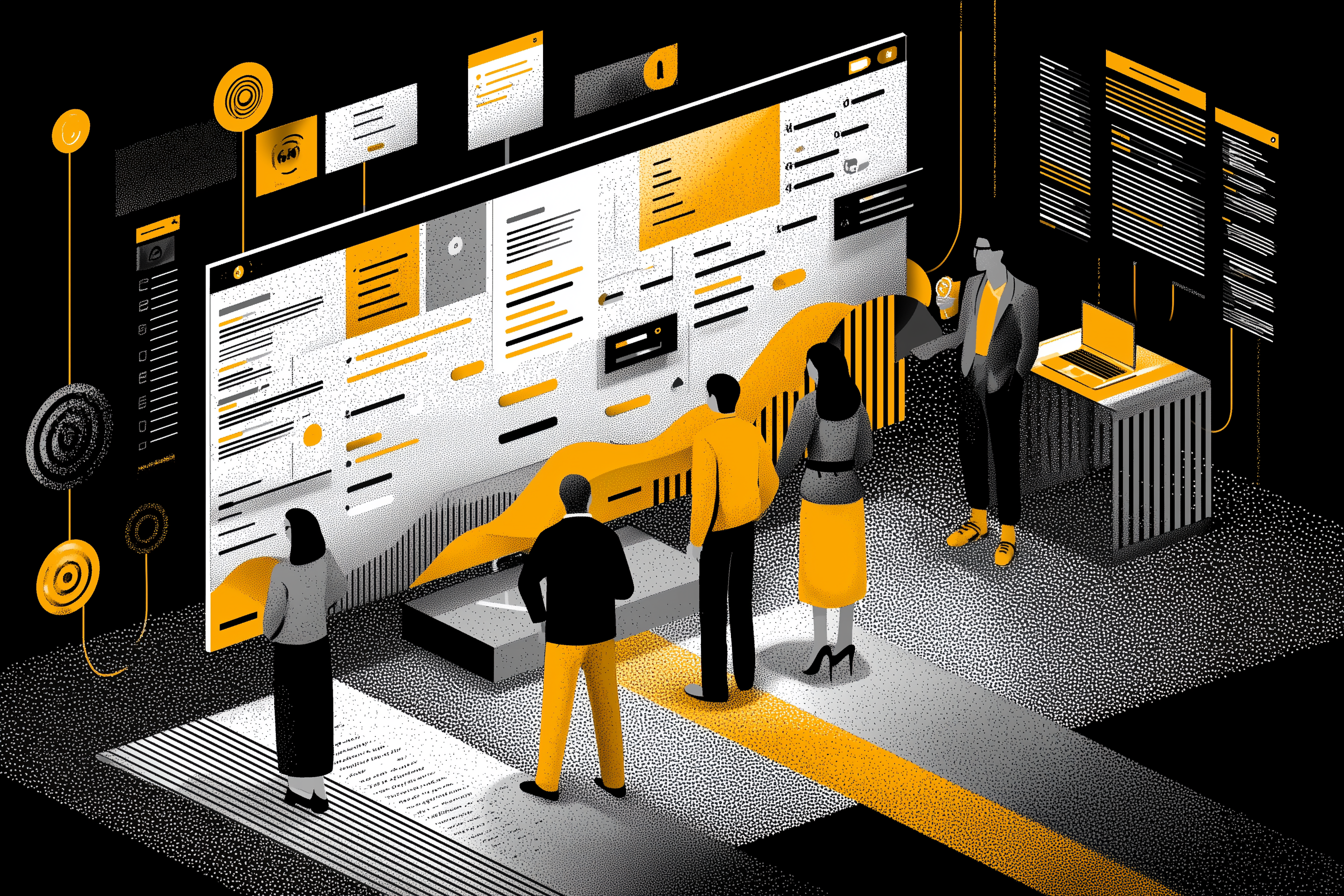Intelligent agents: how AI agencies improve the detection of emerging trends

Anticipate Major Trends with Intelligent Agents and Agentic AI: Strategies, Use Cases, and Best Practices for Businesses
Agentic AI: Understanding How Intelligent Agents Transform Trend Detection and Strategic Foresight
In markets that evolve at high speed, where data volumes explode and weak signals multiply, businesses must find new ways to anticipate what’s coming—before competitors do.
AI is no longer just an analytical tool: it’s entering a new phase, often referred to as agentic AI.
An intelligent agent no longer simply reacts—it observes, plans, and acts within a defined scope with a certain degree of autonomy.
In this article, we’ll explore what Agentic AI is, why it enhances trend anticipation, how to implement it within an organization, and what its limitations and best practices are.
Understanding Agentic AI: A Natural Evolution of Artificial Intelligence
What Is an Intelligent Agent? Simple Definition and Examples
Agentic AI refers to artificial intelligence systems capable of planning, reasoning, and acting autonomously to achieve a given goal, with limited human supervision.
As IBM explains:
“Agentic AI describes AI systems that are designed to autonomously make decisions and act, with the ability to pursue complex goals with limited supervision.”
Thus, an intelligent agent goes far beyond a simple chatbot or generative model waiting for a prompt—it embeds itself into workflows, interacts with external tools, manages multi-step processes, and adapts its behavior according to context.
From Analytical AI to Agentic AI: Toward Autonomous Supervised Systems
Previous generations of AI were mainly predictive (analyzing historical data, dashboards) or assistive (text generation, summarization).
Agentic AI builds on these capabilities but adds a new dimension: autonomous action.
According to McKinsey & Company, Agentic AI allows companies to “rethink how decisions are made and how work is performed.”
This means Agentic AI doesn’t replace existing AI—it extends it by adding orchestration, state memory, and integration into core business systems.
Anticipating Trends: What Do Intelligent Agents Actually Change in Practice?
Continuous Analysis of Weak Signals: A Competitive Edge of Agentic AI
Emerging trends rarely appear as visible spikes—they often start as weak signals (mentions on social media, subtle changes in customer behavior, small product innovations).
Intelligent agents can monitor these signals in real time, aggregate internal and external data, and trigger alerts when patterns shift.
For instance, an agent could continuously analyze customer feedback and detect a rising interest in a topic long before it becomes mainstream.
How Intelligent Agents Transform Market and Competitive Intelligence
In marketing or strategic intelligence contexts, an agent can automatically collect diverse data sources (web, social media, CRM) and synthesize what’s changing.
It can recommend actions (e.g., adjust a campaign, propose a new segment) and even execute them partially (e.g., launch an A/B test) under supervision.
The result: faster reaction time, reduced noise, and smoother decision-making.
Real-World Use Cases: Market Forecasting, Project Management, Product Strategy
- Retail: Agentic commerce links customer behaviors, product catalogs, and recommendation actions to anticipate emerging needs (McKinsey & Company).
- Creative project management: an agent can track deliverables, flag underperforming assets, and suggest rescheduling (collaborative workflow).
- R&D and product innovation: agents can monitor new patents, publications, or disruption signals within an industry, and trigger active research alerts.
Implementing an Agentic AI-Based Trend Anticipation Strategy
Step 1: Define the Scope and Business Objectives
Start with a clear use case—e.g., “detect behavioral shifts among customers in sector X” or “identify product innovations in domain Y.”
Define success metrics: detection rate, recommended actions, time saved, or cost avoided.
Step 2: Choose the Right Agent Orchestration Tools
There are now dedicated frameworks and platforms for Agentic AI (multi-agent orchestration, API connections, state memory).
The choice depends on your data maturity, workflow complexity, and required integration (CRM, ERP, DAM).
Ensure the platform enables human supervision, decision auditing, and governance transparency.
Step 3: Integrate Agents into Existing Collaborative Workflows
Agents don’t replace teams—they augment them.
Define how the agent fits into validation workflows (e.g., via your project management tool or digital asset management platform).
The goal is to combine automation with human collaboration.
Step 4: Measure, Adapt, and Evolve the System
Track the defined metrics (e.g., number of relevant alerts, time saved in decision-making, adoption rate).
Adjust scope, improve input data, refine supervision rules.
Agentic AI is a living program, not a one-off setup.
The Limits, Risks, and Best Practices of Agentic AI
Data Quality, Bias, and Reliability
An agent is only as good as the data it consumes.
If the data is biased or inaccurate, the agent may produce misleading alerts.
Therefore, always validate data quality, document biases, and maintain a human-in-the-loop process.
Governance, Human Supervision, and Transparency
Even though agents act autonomously, human oversight remains essential.
Define clear rules: Who approves the agent’s actions? What audit reports are generated? How is traceability ensured?
Best Practices for Sustainable Adoption
- Start with a small, controlled pilot project.
- Align the agent’s purpose with specific business goals.
- Involve marketing, data, and project teams from the start.
- Guarantee that the agent can escalate to human supervision at any time.
Augmented Strategic Intelligence: How Agentic AI Redefines Market Analysis
Tangible Benefits Observed Today
The measurable advantages include faster signal detection, more relevant alerts, and reduced workload for intelligence teams.
In commerce, agentic commerce enables new customer-triggered actions (McKinsey & Company).
Interoperability and Cross-Industry Data Sharing
The future of Agentic AI lies in agent interoperability—agents exchanging context, connecting to external tools, and maintaining state memory.
Protocols like the Model Context Protocol (MCP) are already being discussed (McKinsey & Company).
For strategic monitoring, this interoperability links internal signals (CRM, projects) and external data (media, patents, social networks).
Impact on SMEs and Marketing Agencies
Even smaller organizations can benefit from Agentic AI by integrating agent modules into workflows for task management, project backlogs, or asset management (DAM).
The strategic edge lies in anticipation, not just reaction.
Conclusion: Toward Augmented Strategic Intelligence
Agentic AI isn’t an isolated technological leap—it’s an evolution of how AI operates in business: adding autonomy, planning, orchestration, and action to analysis.
For decision-makers, this means detecting weak signals earlier, adapting strategies faster, and reinforcing collaborative workflows through intelligence.
Companies that launch small-scale pilots, integrate agents into workflows, and set clear KPIs will likely double their anticipatory capabilities.
Now it’s your turn to assess your maturity level, define a concrete use case, and lead the initiative with purpose.
FAQ: Everything You Need to Know About Intelligent Agents and Agentic AI for Trend Detection
What is an intelligent agent in Agentic AI?
An intelligent agent is an AI system capable of gathering data, making decisions, and taking actions within a defined scope—with a certain degree of autonomy.
How do intelligent agents help anticipate trends?
They continuously monitor weak signals, synthesize internal and external data, and trigger alerts or automated actions—speeding up business response times.
What are the main challenges of Agentic AI in business?
Data quality and bias, governance gaps, lack of transparency, overhyped promises, and unclear ROI.
In which sectors do intelligent agents create the most value?
Marketing, retail, logistics, supply chain, R&D, and financial services—anywhere rapid change detection is crucial.
How can I start an Agentic AI project for trend prediction?
- Choose a focused, concrete use case.
- Collect internal and external data.
- Select an appropriate agent platform.
- Integrate the agent into an existing workflow (e.g., project management, DAM).
- Measure KPIs, adjust, and iterate.
Sources
Other Posts

How to effectively coordinate multiple teams on a marketing campaign

How to choose the best project management software for your marketing or creative team

